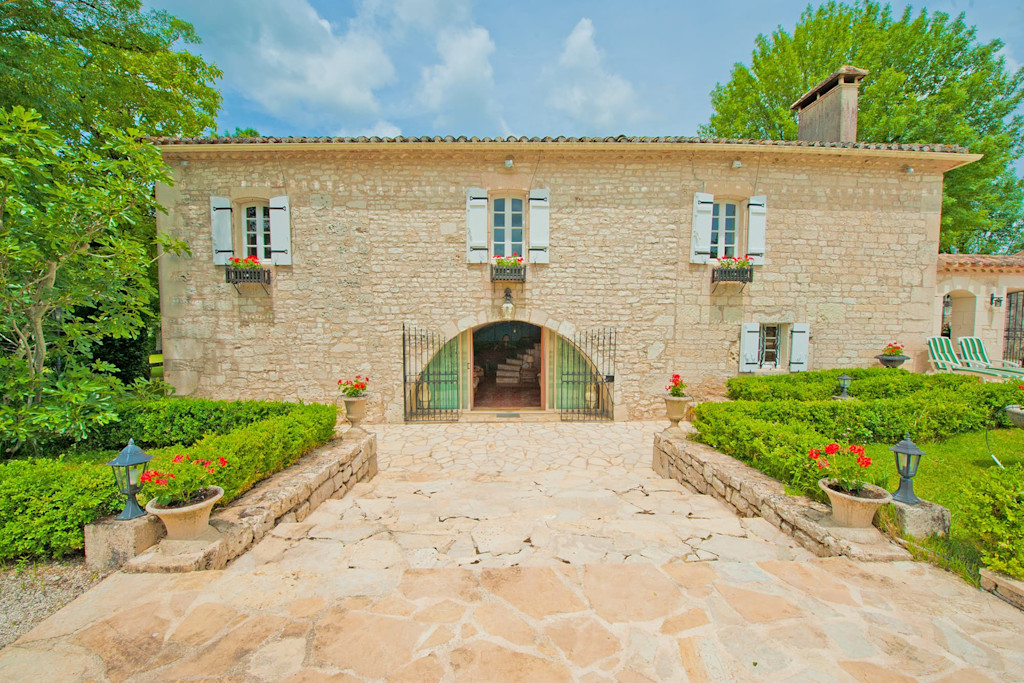
05 March 2021 | Holidays
Manoir de Saux, a long history
Manoir de Saux has been around for a long time, Just how long is difficult to know. It stands directly on the area's white limestone bedrock, while a superficial survey of its structure suggests that in its time, it has been at least three dwellings.
Interestingly, there is no trace of the well or natural cistern that must have supplied water to the house.
Sadly, the chaos of the French Revolution makes it more difficult to trace the history of French families, communities and their houses than in many other European countries. What we do know is that 'Clauzades' is probably an Occitan (the ancient language of the area) word, meaning, loosely, 'enclosure'. The house is classified as a 'maison de maitre', which translates as 'mansion', but is, more accurately, the equivalent of what, in English nomenclature would be a 'yeoman's house'.
Although there are few records of the various developments in the history of the house, the oldest parts are probably early 17th century, but may be older. The garden room and the sitting room above, appear to be the original structure. There is evidence of a subsequent 'E' shaped plan, with two additional sections: the Blue room and Studio; and the Kitchen and Rose room. The gîte is late 20th century and built from the remains of an ancient barn that stood where the herb garden is located. The old tower and surrounding buildings are an early 21st century rebuild, based on the foundations of earlier structures that may well have been the 'enclosure' that gave the house its name.
There are only three inscriptions on the structures of the house. One is on the stone lintel over the kitchen door, which is etched, '1840'. This date almost certainly reflects one of the house's many re-modellings, rather than a date of origin. There is also an etched name, which, despite many attempts, we've been unable to decipher.
The second inscription is above the arch of the pigeonnier gatehouse. It is dated '1802' and is surrounded by a heart. This has led us to some fanciful conjecture. 1802 was only thirteen years after the Revolution and the year when Napoleon Bonaparte was proclaimed Consul of France for life. He had won his famous victory at Marengo against Austria, had just completed a major conquest of the states of the Italian peninsular and his prodigious 'Grande Armee' was beginning to take shape. Subsequently, the Treaty of Amiens, March 1802, had brought a temporary peace to Europe.
So, our guess about the inscription above the arch is as follows: the owner had fought in Italy for Napoleon and brought home much booty. He had either found a wife in Italy and brought her home, or returned to a local sweetheart, and built the pigeonnier, an established symbol of success and or wealth, to mark their subsequent wedding. It may not be true, but it's a good story and fits the evidence.
Finally, the pigeonnier also has a carved cross at the foot of its outer northern pillar. Again, we had imagined that it might be a symbol of sanctuary, offered to pilgrims on the way to Santiago de Compostela, one of the routes to which passes nearby.
However, this thought has been superseded by the more likely suggestion that it is a 'Station of the Cross' of the church of Saint-Andre in Saux village. Today, stations of the cross punishments for sins are done within the walls of the church. However, in the past, sinners would have to traipse around twelve points in the village to say their prayers of forgiveness. It was quite an ordeal. The periphery of Saux represents a journey of more than a dozen kilometres. It made the wages of sin very obvious and stark to all concerned.
Photo gallery














